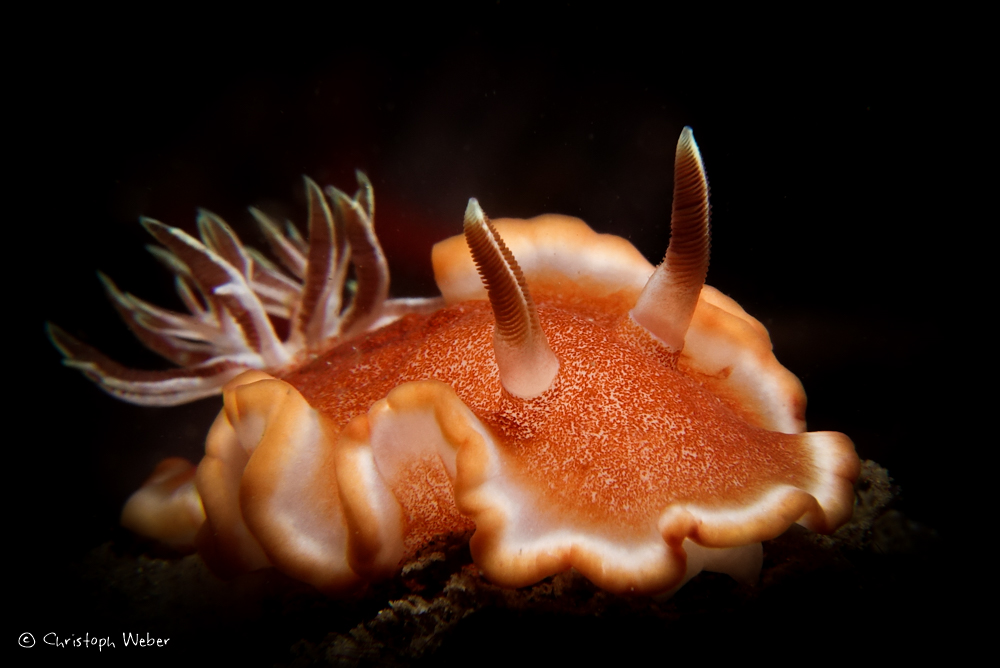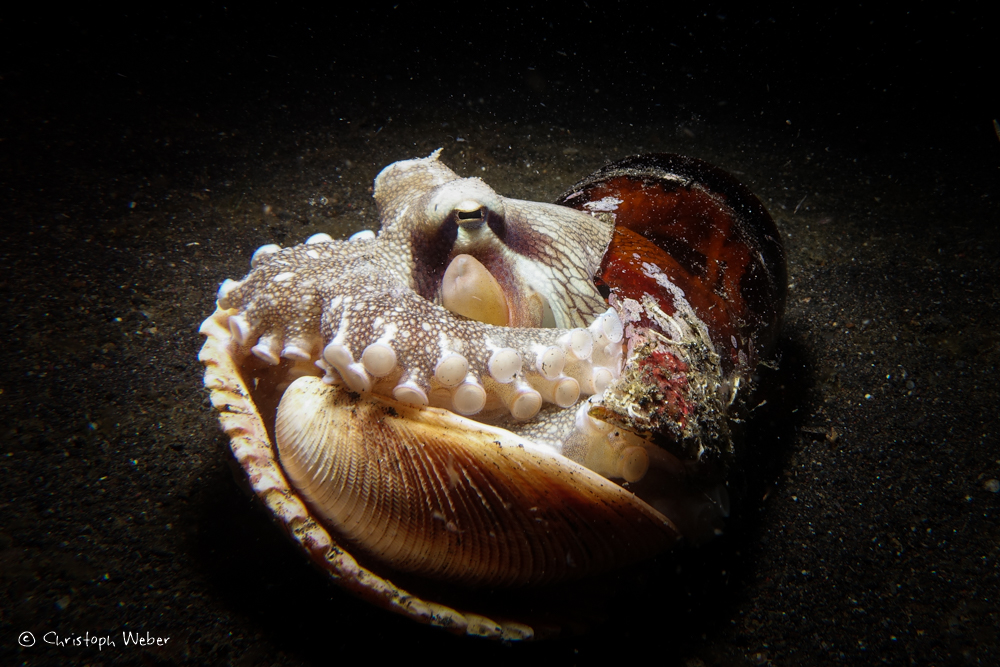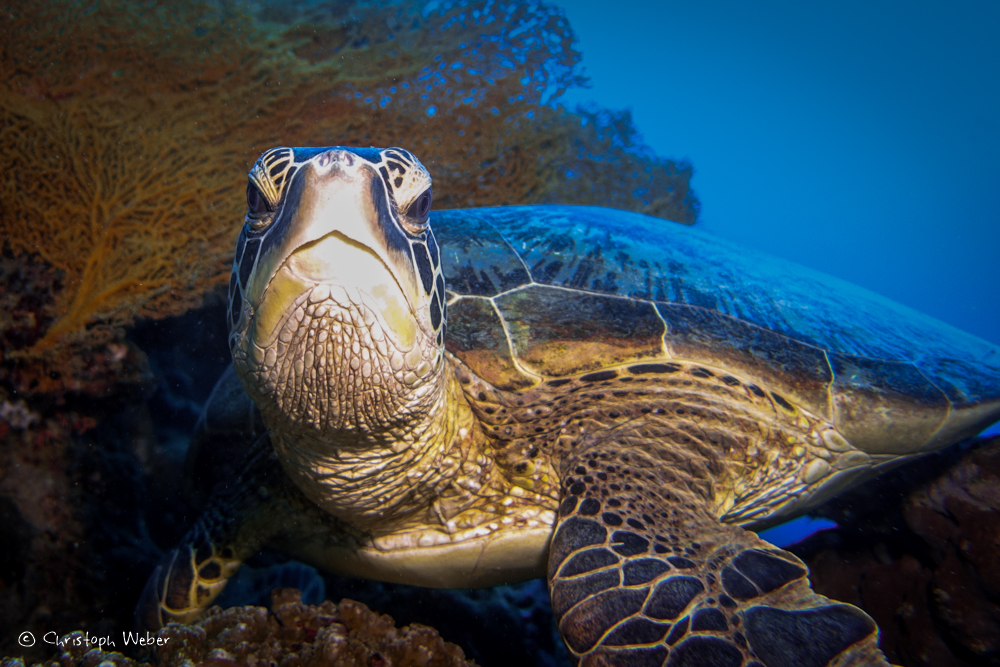North Sulawesi 2017 from Christoph Weber on Vimeo.
We spoke to Chris Weber after he shared this amazing video with us. If, like we were, you’re full of questions about how and where it was taken, read on…
What kind of camera do you use for your videos?
I have been shooting with compact cameras since the beginning of my underwater addiction. My current camera is a Sony RX100 Mk3 that has its home in a Recsea aluminium housing. Depending on where I am and what I am shooting I might add wetlenses for macro or wideangle. For lighting I use a single iTorch Venom35s for closeup-shots, and sometimes a redfilter for wideangle-shots. I am a big fan of my flip adaptor, which lets me put macrolenses or redfilter on / off with a flick of my wrist.

What would you say are the most useful skills in underwater videography?
In my opinion the very most important thing is to become a good diver first. Good buoyancy control, decent air consumption and at least a basic understanding of how to approach marine life and not to spook or disturb it are absolutely essential in getting good footage. This is why I would recommend to not take a camera with you right after your PADI Open Water diver course. Your diving skills will improve a lot faster if you can focus on them and do not have to care about a camera as well. I know it is very tempting to stick your camera into an underwater housing and take it with you right away, but if you don’t it will probably lead to getting better footage faster in the end. Another big plus is that you don’t risk damaging marine life; being focused on your camera while still having poor buoyancy control will make you crash into a reef more sooner than later. Don’t be that diver!
You generally want to be as close as possible to your subjects to get the best shots underwater. So when it comes to diving skills, I think the most useful skill is to be able to hold perfectly still and breathe very slowly and quietly, and to know when to do that. This can make the difference between a shy shark turning away at 5m distance or that same shark coming in for a closer look and passing you at arms length. The same goes for most other subjects as well; approach them as slowly and quietly as possible and avoid any sudden or jerky movements.
When filming with your camera underwater try to keep your shots as steady as possible. If possible aim for no or slow camera movement and keep your camera stable without sudden changes of direction. If you have only a small, handheld camera as equipment so far, like a GoPro or a compact, invest in a tray to mount it on and two handles. The improvement regarding stability of your footage will be vast!
Another very useful skill is understanding your camera and its settings, along with the usage of other pieces of equipment like lights, filters, and lenses. There are great resources on the web regarding these topics; learning these things (especially handling light underwater) will improve your footage a lot.
And last but not least, having some skills in video-editing software can make the difference between ‘nice shots’ and ‘wow, awesome video!’.

This video is a conglomeration of three weeks of diving in North Sulawesi, can you tell us a bit more about the dive sites you feature?
North Sulawesi has a lot to offer underwater (and above as well!), so I planned that trip to cover the most known areas, Bunaken and Lembeh, and to spend enough time in each of them in those three weeks.
The diving is vastly different in those two areas.
In Bunaken you have mostly wall dives with nice reef tops in the shallows. The corals are very healthy and the walls are quite spectacular, with big schools of reef fish and usually great visibility on most dive sites. Expect to fly through thousands of butterfly fish, triggerfish and sgt. majors on a regular basis. Add to that an abundant number of turtles, the occasional sightings of eagle rays, reef sharks and Napoleons, plus nice macro subjects as well, and you have a great tropical reef diving destination. Currents can pick up on certain sites and at certain times.
Lembeh on the other hand is one of the muck diving hotspots of the world. You basically look at black sand for 60-90 minutes and hope that you (or your eagle eyed guide) see something interesting, usually a small and well camouflaged critter that often looks like it just landed from out of space. This is a lot more fun than it might sound to those who have never tried muck diving! The variety of the creatures I saw in my 8 diving days in Lembeh was amazing; it included several sightings of critters I have never seen before, and only a fraction of them made it into the video!

Do you have any moments from this trip that really stand out as being special in your memory?
On my first diving day in Lembeh, the unofficial muck diving capital of the world, I saw…. dolphins!
And the night dives in Lembeh were the best I have ever done; we surfaced with broad smiles and almost empty camera batteries after every one of them.
What general tips do you have from these dives?
1. If you want to dive in both Bunaken and Lembeh: there are several operators who have dive resorts on both islands; if you book with one of those it is probably easier to react to unforseen events, for example bad weather, as they usually can get you to their other resort with minimal effort and on short notice.
2. Never ever skip a night dive at Lembeh!
If this has inspired you to explore your inner underwater photographer then check out our Digital Underwater Photographer specialty course